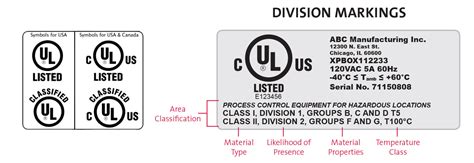What is UL Certification?
UL certification is a voluntary process that involves rigorous testing and evaluation of products to ensure they meet specific safety standards set by Underwriters Laboratories. UL is an independent, globally recognized safety science company that has been setting safety standards for over a century.
Types of UL Certifications
There are several types of UL certifications, each with its own set of requirements and standards. Some of the most common UL certifications include:
- UL Listed: This certification applies to products that have been tested and found to meet UL’s safety standards.
- UL Recognized: This certification applies to components that are used in end-products and have been tested to meet UL’s safety standards.
- UL Classified: This certification applies to products that have been evaluated for specific properties, such as flammability or electrical safety.
The Importance of UL Certification
UL certification is crucial for several reasons:
-
Safety: UL certification ensures that products are safe for use by consumers, reducing the risk of electrical shock, fire, and other hazards.
-
Compliance: Many countries and jurisdictions require products to meet specific safety standards before they can be sold. UL certification helps manufacturers comply with these requirements.
-
Market Access: UL certification can help manufacturers gain access to new markets, as many retailers and distributors prefer or require UL-certified products.
-
Brand Reputation: UL certification can enhance a brand’s reputation by demonstrating a commitment to safety and quality.
How to Obtain UL Certification
To obtain UL certification, manufacturers must follow a specific process:
-
Product Testing: The product must undergo rigorous testing to ensure it meets UL’s safety standards. This testing may include electrical, mechanical, and environmental tests.
-
Factory Inspection: UL representatives will inspect the manufacturing facility to ensure that the products are being manufactured in accordance with UL’s standards.
-
Certification: If the product passes all tests and inspections, UL will issue a certificate of compliance.
-
Ongoing Compliance: Manufacturers must maintain ongoing compliance with UL’s standards to maintain their certification.

UL marking on Circuit Boards
Once a product has obtained UL certification, it is essential to properly mark the circuit board to indicate compliance. UL marking on circuit boards typically includes the following elements:
- UL Logo: The official UL logo must be present on the circuit board.
- File Number: The UL file number, which is a unique identifier assigned to the product, must be included.
- Manufacturer’s Logo: The manufacturer’s logo or name must be present on the circuit board.
UL Marking Requirements
UL has specific requirements for marking circuit boards, including:
- Size: The UL logo must be at least 2.4mm high and proportionally wide.
- Color: The UL logo must be a contrasting color to the background of the circuit board.
- Location: The UL marking must be located near the manufacturer’s logo or name.
| Element | Requirement |
|---|---|
| UL Logo | Minimum 2.4mm high, proportionally wide, contrasting color |
| File Number | Must be included |
| Manufacturer’s Logo | Must be present |
| Location | Near manufacturer’s logo or name |
Examples of UL Marking on Circuit Boards
Here are a few examples of properly marked UL circuit boards:
[Insert images of properly marked UL circuit boards]
FAQ
-
Q: Is UL certification mandatory for all products?
A: No, UL certification is voluntary. However, many countries and jurisdictions require products to meet specific safety standards, which can be achieved through UL certification. -
Q: How long does the UL certification process take?
A: The duration of the UL certification process varies depending on the complexity of the product and the scope of the testing required. On average, the process can take several weeks to several months. -
Q: Can UL certification be revoked?
A: Yes, UL certification can be revoked if a product is found to no longer meet UL’s safety standards or if the manufacturer fails to maintain ongoing compliance. -
Q: Are there any exemptions to UL marking requirements on circuit boards?
A: In some cases, such as for very small circuit boards or for components that are not visible to the end-user, UL may grant exemptions to the marking requirements. -
Q: Can products be sold without UL certification?
A: Yes, products can be sold without UL certification. However, many retailers, distributors, and consumers prefer or require UL-certified products, as it demonstrates a commitment to safety and compliance.
Conclusion
UL certification is a critical aspect of product safety and compliance in the electronics industry. By ensuring that products meet stringent safety standards, UL certification helps protect consumers and enhances brand reputation. Proper UL marking on circuit boards is an essential part of demonstrating compliance and maintaining certification.
As a manufacturer, it is crucial to understand the importance of UL certification and to follow the necessary steps to obtain and maintain certification. By doing so, you can ensure the safety and reliability of your products, gain access to new markets, and build trust with your customers.

No responses yet